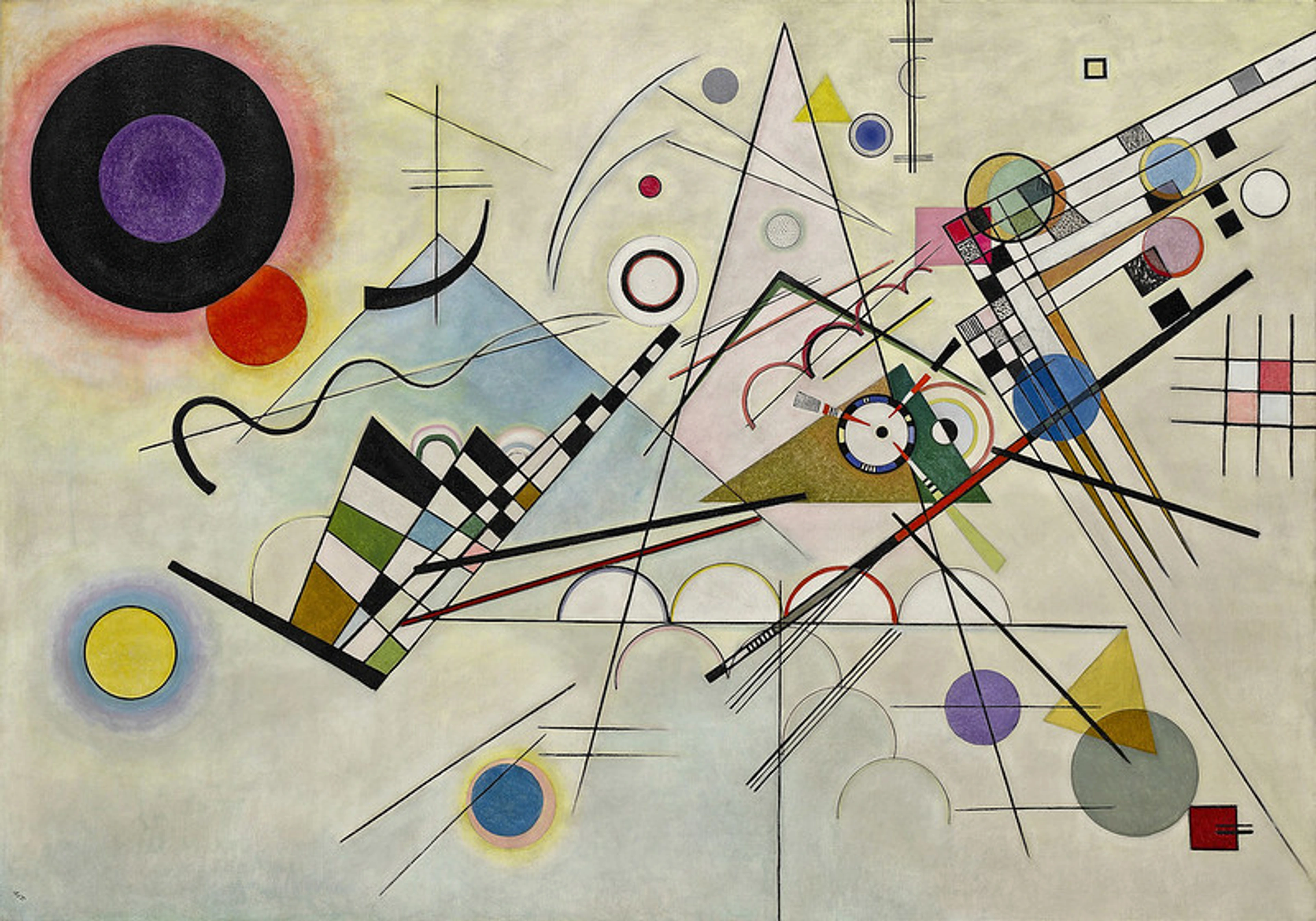
Geometric Symbolism in Abstract Art: Unlocking its Ancient Language
Dive into the profound world of geometric symbolism in abstract art. This curator's journey explores the historical, psychological, and universal meanings of lines, circles, squares, and triangles, revealing their power to evoke deep emotion, connect to ancient memory, and shape our perception of existence.
The Unspoken Language: My Journey into Geometric Symbolism in Abstract Art
Oh, hello there, fellow art explorers! Come on in, make yourself comfortable. My studio is a bit of a beautiful, chaotic mess, much like my mind on most days. And, to be honest, articulating the swirling thoughts and feelings inside me can be… well, a heroic struggle. But then, I turn to abstract art, and something as seemingly simple as a circle or a square pops out. In that moment, they hold such immense, almost comforting, power. It’s a quiet revelation, a moment of profound recognition without needing a single literal word.
For me, understanding these geometric shapes in abstract art isn't just about theory; it's a deeply personal journey into a language I understand, even if I can’t always speak it back – a silent dialogue with something ancient and universal within us all. It’s almost like deciphering a secret code written in the most universal alphabet, unlocking a deeper understanding of existence. This article is my attempt to explore this "unspoken language" and the profound symbolism woven into abstract art through its most fundamental forms.
Beyond their immediate visual appeal, these fundamental forms carry a rich, almost primal, tapestry of historical, cultural, and psychological symbolism. As a curator – and let’s be honest, as a human who sometimes struggles to articulate the big, messy feelings – I find myself perpetually drawn to the inherent clarity and intentionality of these structures. It's like they tap into a collective unconscious, a shared "ancient memory" as Carl Jung might describe, where certain forms hold intrinsic meaning across cultures and time. Artists, by stripping away the literal and the representational, amplify the inherent power of these forms, turning them into potent communicators of profound ideas and evoking deep emotional responses that sometimes, even I can't quite put into words. This journey helps me in decoding abstract art: a guide to finding meaning in non-representational works, offering a new, deeply personal lens through which to appreciate the depth and intention behind non-representational works.
The Silent Partners: Unpacking Negative Space & Perception
Before we dive into those powerful, enclosed forms, let me share a little secret from my studio – a fundamental truth I've come to rely on. That immense, almost comforting power I mentioned earlier? It isn't solely found within the shapes themselves; it's profoundly shaped by the very air they breathe. It’s not just about the shapes you put in the painting; it’s just as much, if not more, about the shapes you don’t put in.
The negative space – those seemingly "empty" areas surrounding and between your geometric forms – is just as crucial, if not more so, than the forms themselves. It's the silent stage where their relationships are truly defined, giving each form its presence, its voice. Think of it as the breath of the composition. Without thoughtful negative space, even the most profound geometric forms can feel cluttered, suffocated, or lose their impactful presence.
Imagine a single bold square: if it's placed in a vast, open negative space, it feels monumental, isolated, perhaps even vulnerable. But if it's crammed amongst other forms with no breathing room, its power is diluted, its symbolic weight diminished. It's a subtle, deliberate dance between presence and absence, making the composition breathe and allowing each shape its moment to resonate, to assert its symbolic weight. It’s what gives forms their punch, their space to sing. It reminds me that sometimes, what isn't said is the most powerful statement of all. This interplay is a core element of the role of negative space in abstract art: finding balance and focus. Moreover, our perception of these relationships is often guided by Gestalt principles – how our brains naturally group and interpret visual information, finding patterns and wholes even in abstract arrangements. It’s fascinating, isn't it? How our minds instinctively seek meaning.
The Genesis of Geometry in Abstraction: A Philosophical & Spiritual Leap
So, how did we get here, to this appreciation of pure form? The early 20th century was a wild, tumultuous time, wasn't it? After the profound societal shifts and the shattering impact of World War I, many artists felt a desperate need to move beyond literal representation. It was as if the old ways of seeing the world just… didn't fit anymore. They sought universal truths, a sense of order, and spiritual harmony amidst the chaos.
Before the full embrace of pure geometry, movements like Cubism, pioneered by artists such as Pablo Picasso and Georges Braque, began to fragment and reassemble reality, breaking down objects into geometric planes and challenging single-point perspective. This revolutionary approach, exploring multiple viewpoints simultaneously, paved the way for a deeper exploration of form itself, gradually stripping away the recognizable to focus on underlying structures.
From this foundation, movements like Suprematism, De Stijl, Constructivism, and the Bauhaus school championed the use of pure geometric forms, believing they could express the essential structures of existence itself.
Think about Kazimir Malevich's iconic "Black Square" – a radical, almost shocking reduction to the purest form. For Malevich, this wasn't an empty canvas; it was brimming with 'pure feeling' and a sense of 'spiritual liberation,' a stripping away of the material world to reveal a deeper, emotional truth. He saw it as a "zero point" of painting, a path to pure non-objectivity. If you're curious about the broader context of this shift, exploring the history of modern art provides a deeper understanding of this pivotal era, and The Bauhaus movement's enduring influence on modern design and art shows how this philosophy permeated every aspect of design, from a teapot to a building. It wasn't just art; it was a whole new way of living and seeing.
The Fundamental Building Blocks: Lines and Their Stories
Before we dive into the grand, enclosed shapes – those big personalities of the geometric world – we absolutely must acknowledge the quiet hero, the unsung architect of all geometry: the line. It’s where everything begins, isn't it? Every form, every boundary, every connection starts with a line. They are the initial spark of intention, the first brushstroke of direction in a composition. What stories do they tell, just by existing? And how does their presence, their very being, resonate with us?
- Psychological Impact:
- A horizontal line can feel calm, stable, like a serene horizon stretching out before you. It grounds us, whispers of peace, and suggests rest or distance.
- A vertical line feels commanding, aspirational, like reaching for the sky or a steadfast pillar. It pulls our gaze upwards, demands attention, and implies strength or elevation.
- Diagonal lines? Ah, these are the troublemakers! Pure energy, tension, dynamism – they're the ones that stir things up, creating a sense of movement, conflict, or excitement. They convey direction, force, and rhythm, often without us even realizing their subtle power. They’re the visual equivalent of a dramatic crescendo!
- Consider also line weight and texture. A thick, bold line feels assertive and strong, while a delicate, thin line suggests fragility or subtlety. A jagged, textured line can evoke chaos or raw emotion, contrasting sharply with a smooth, precise one that implies order and control.
- Artistic Use:
- Beyond mere boundaries, lines can also powerfully convey depth and perspective in abstract art. Through overlapping lines, varying weights, or the strategic arrangement of linear elements, artists create illusions of layered space, guiding the eye through a composition even without traditional vanishing points. It's like building invisible pathways and horizons on a flat canvas, inviting you to journey deeper into the artwork.
- From the rigid grids that would become synonymous with Piet Mondrian to the expressive, gestural lines of Wassily Kandinsky that dance across the canvas, lines are utterly crucial. They are the very veins of the artwork, the skeletal structure of its meaning. Think of the precise, measured lines in Neoplasticism versus the spontaneous, emotional lines of Abstract Expressionism.
- Even in Cubism, artists like Juan Gris used a fragmented, geometric approach, breaking down objects into intersecting planes and lines to reveal multiple perspectives simultaneously. It's a fundamental element of what is design in art, shaping how we perceive space and form.
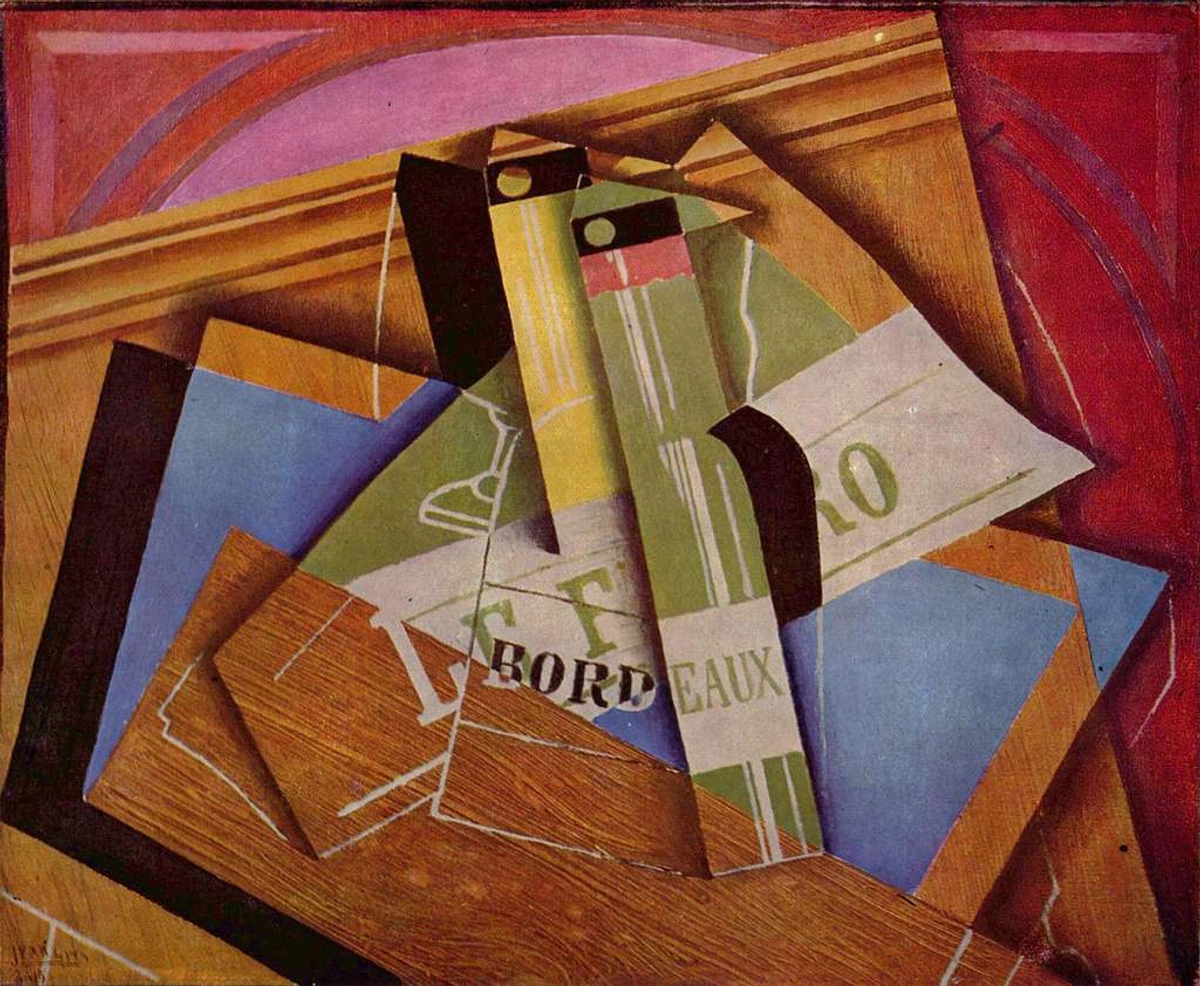
- Artists like Alexandra Exter (associated with Constructivism) used strong, intersecting lines and planes to suggest movement and structure, particularly in her theatrical designs – I mean, talk about setting the stage, literally! Lines can build entire worlds. Even in typographic art, as seen in Theo van Doesburg's "Kleine Dada Soirée" poster, lines and geometric arrangements of text create a powerful visual statement, demonstrating the versatility of geometry in conveying message and emotion. It's truly everywhere, once you start looking. So, what happens when these foundational lines enclose a space?
![]()
![]()
Decoding the Iconic Shapes: A Personal Inventory of Universal Meanings
Now, for the main characters of our geometric drama! Each enclosed geometric form carries a distinct psychological and symbolic weight. Artists, whether consciously or intuitively, harness these inherent qualities to imbue their abstract compositions with meaning. This exploration certainly helps me in decoding abstract art: a guide to finding meaning in non-representational works, helping me understand what I'm truly looking at, or rather, what I'm feeling.
Before we dive into the specifics, it's worth noting that the "ancient memory" these shapes tap into isn't just cultural; it's often rooted in the natural world around us. Think of the intricate patterns in crystals, the perfect spirals of a seashell, or the hexagonal cells of a beehive. This "organic geometry" subtly bridges the gap between the purely abstract and the deeply familiar, showing us that even the most 'invented' forms have echoes in nature. It reminds me that art is always, in some way, a reflection of existence, both seen and unseen.
While we often focus on the big three – squares, circles, and triangles – it's worth remembering that other forms like ovals, rhombuses, hexagons, and spirals can carry their own nuanced weight, drawing on that deep, ancient memory within us. For instance, hexagons often represent balance, harmony, and community (think of beehives or snowflakes!), while spirals evoke growth, evolution, and cosmic journeys – a path inward or outward, much like the winding path of life itself. Even an oval can suggest femininity, cycles, or a softer, more organic containment than a rigid circle. And then there's the pentagon, often associated with the human form, the five senses, or sacred geometry – a powerful symbol of connection and growth.
The Square & Rectangle: Grounding the Cosmos, Defining Order
From the boundless flow of the circle (which we’ll get to!), let's start with the stoic, reliable friends of the geometric world: the square and rectangle. These are the symbols of rationality, structure, and human-made order. They represent stability, permanence, and the tangible world – the earth beneath our feet, the buildings that shelter us. Their four equal sides or right angles often convey a sense of balance and groundedness. Sometimes, they can feel almost rigid, unwavering, a stark contrast to the organic flow of a circle. But isn't there a strange comfort in that rigidity, too? It's like the quiet assurance of a firmly planted oak, or perhaps, for a restless mind like mine, the unexpected peace of a perfectly organized studio shelf.
- Psychological Impact:
- Feelings of security, logic, and a controlled, predictable environment. They are the anchors of a composition, the silent guardians.
- They can be perceived as rigid or unwavering, embodying a sense of discipline, containment, or even a quiet, unyielding strength. It's a double-edged sword, really: comforting order for some, restrictive confinement for others.
- Their precise, measurable nature can evoke a sense of human intellect and intentional design – the triumph of order over chaos.
- Artistic Use:
- No artist is more synonymous with the square and rectangle than Piet Mondrian. It's almost impossible to think of one without the other! Interestingly, his earlier work, "Tableau III: Composition in Oval," showcases his exploration of form before his signature grid became fully dominant. It’s a fascinating glimpse into an artist's journey of distilling form to its essence, moving towards that pure expression.
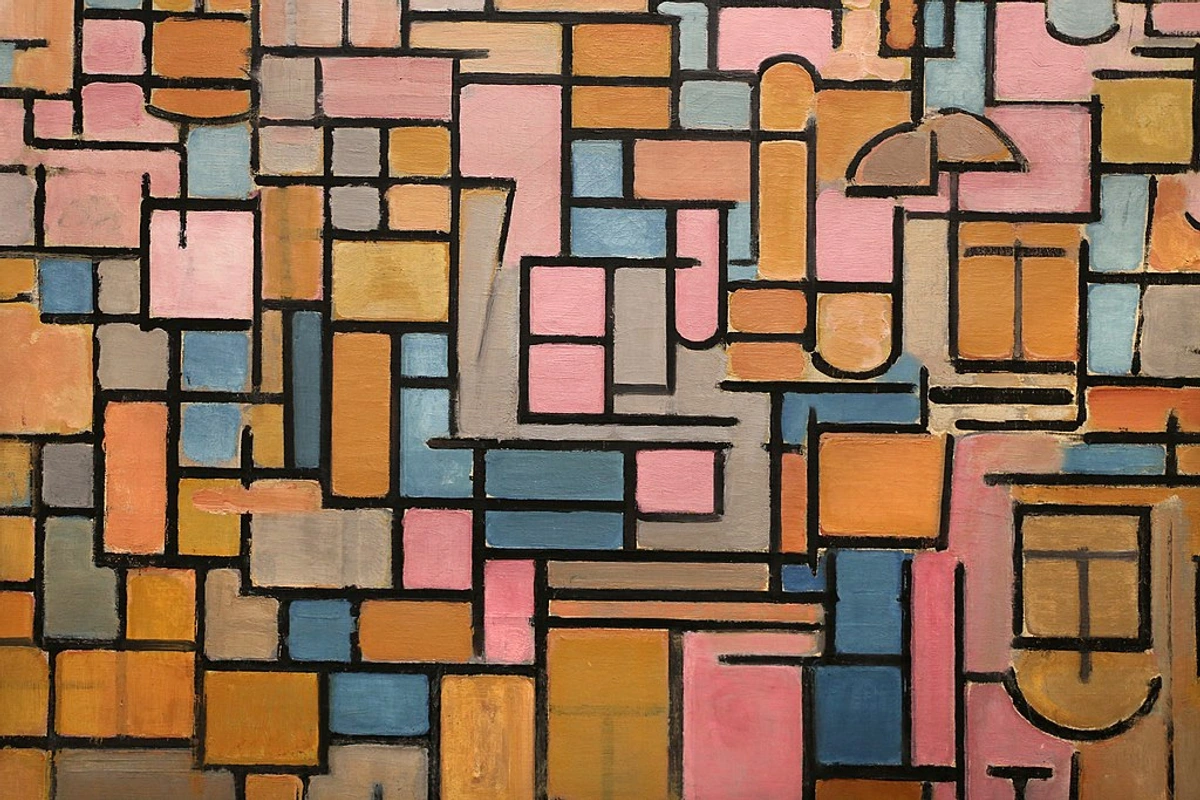
- Through his "Neo-Plasticism" within the De Stijl movement, Mondrian sought to express universal harmony and purity through compositions of primary colors and orthogonal lines. He truly believed this reflected a spiritual order underlying the chaos of the world. For him, the grid wasn't a limitation but a pathway to universal expression, a fundamental design in art that spoke volumes.
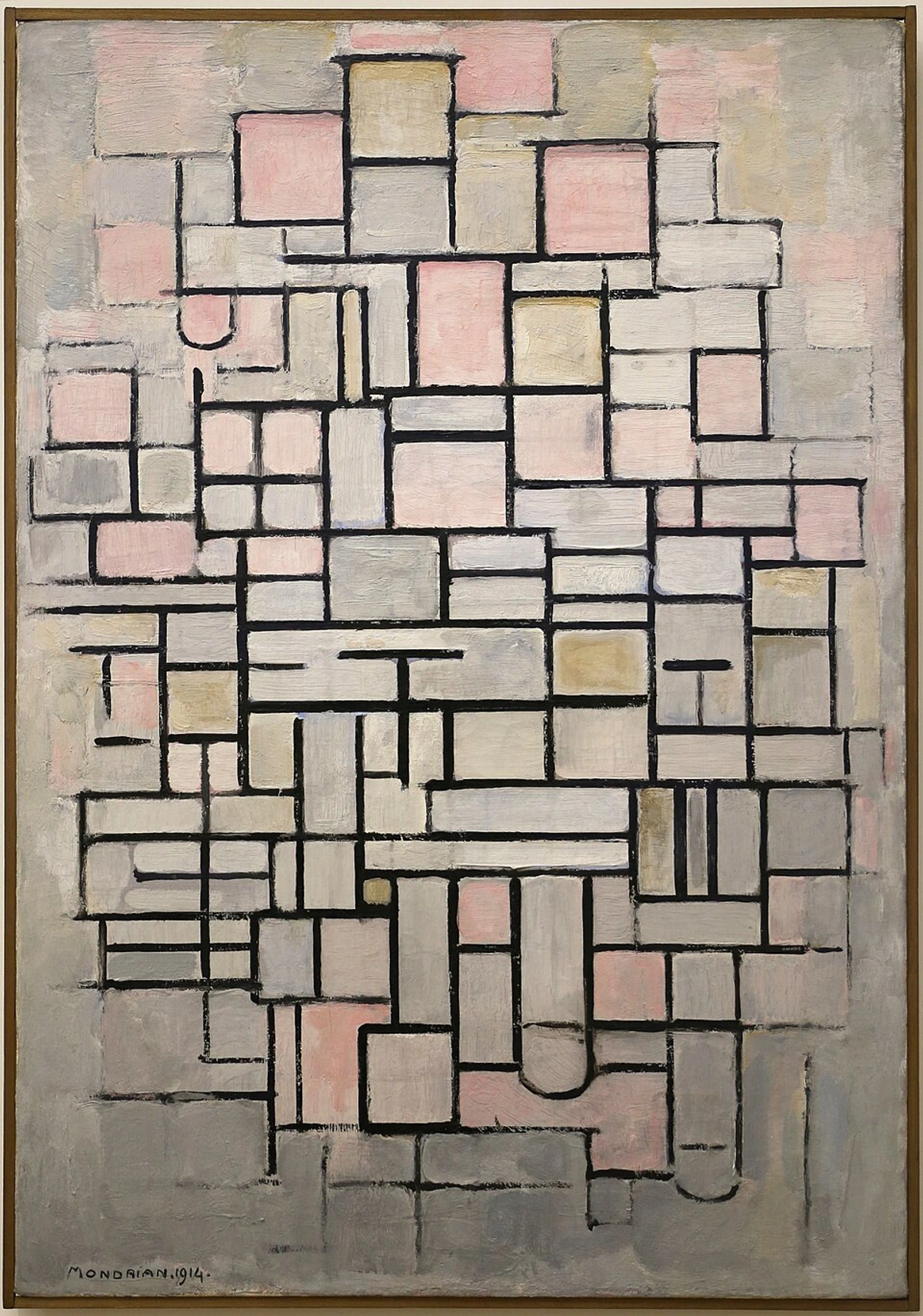
- Another artist, Josef Albers, dedicated much of his career to exploring the square in his "Homage to the Square" series, meticulously studying the interaction of colors within this fixed form. And then there's Gerhard Richter's "1024 Colors," a grid of vibrant squares that, in its systematic arrangement, hints at both rigorous order and infinite variation. It's a wonderful example of how geometric forms can be used in a minimalist context, showing that even strict geometry can hold infinite possibilities. You can dive deeper into this concept with our ultimate guide to minimalism.
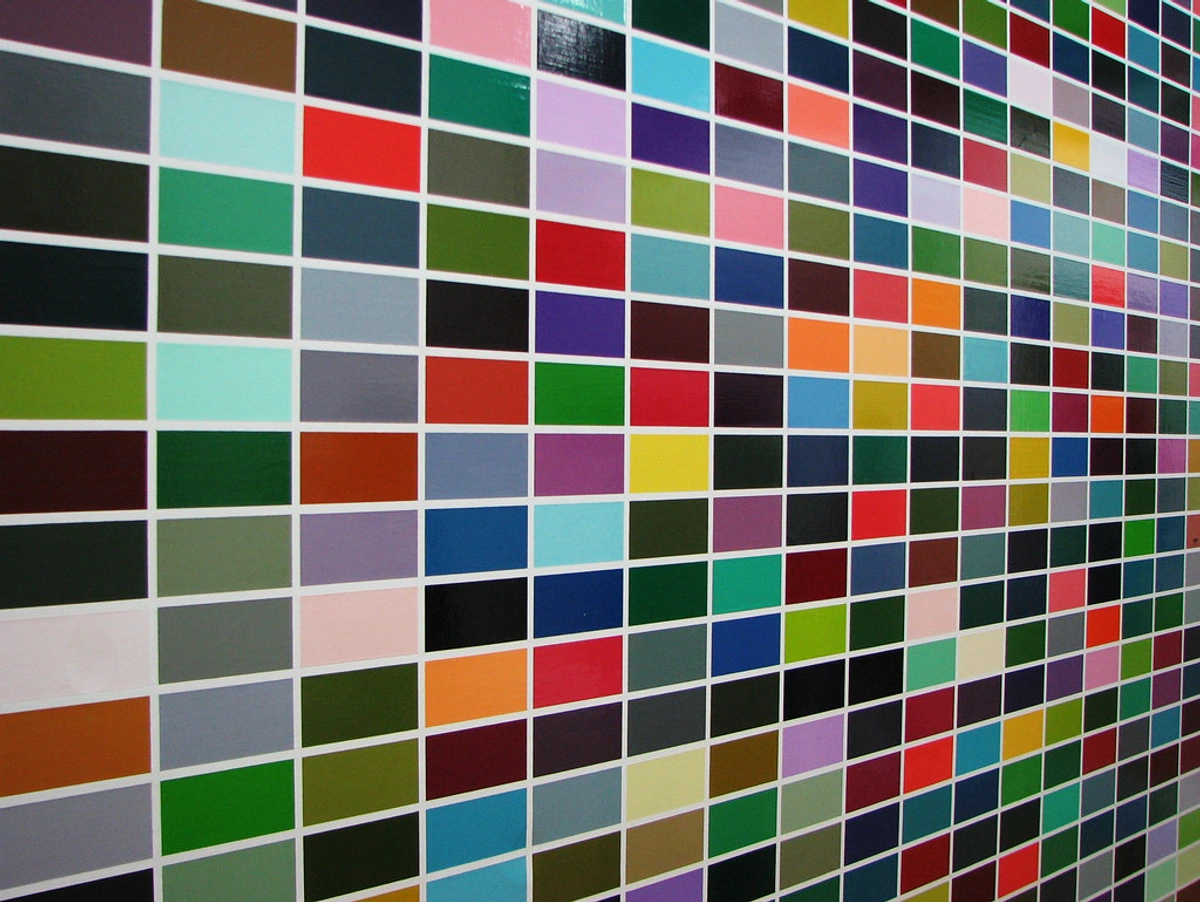
What feelings do squares and rectangles evoke for you? Do they feel like home, or like a cage? Perhaps a bit of both, a comforting cage?
The Circle: Eternal Embrace and Cosmic Whisper
From the grounding certainty of the square, we now float into the boundless realm of the circle. The circle is perhaps the most universally recognized symbol of completeness and eternity. Seriously, it's everywhere – from ancient sun disks to the very atoms that make us. Without beginning or end, it effortlessly evokes cycles, the cosmos, and spiritual unity. For me, it often feels like a comforting embrace, a moment of profound calm in a busy, angular world. I remember once, standing before a piece dominated by a single, expansive circle, feeling an unexpected sense of peace wash over me, a silent reassurance, as if the universe itself was whispering a secret. In many cultures, it represents the divine, perfection, and the sacred. It's often the antidote to the square's rigidity, a gentle, all-encompassing presence.
- Psychological Impact:
- A sense of calm, harmony, natural fluidity, and inclusivity. It feels protective, organic, and often boundless. It's the ultimate 'hug' of a shape, or sometimes, to my more anxious mind, a vast, empty void that demands to be filled.
- Interestingly, an overwhelming number of circles can sometimes evoke a sense of boundless, perhaps even dizzying, energy – like a cosmic dance or a whirlpool of thought. The emotional impact of circles really shifts with their size, quantity, and how they interact with other shapes.
- Consider also its scale and placement: a small, isolated circle can feel precious and intimate, while a large, encompassing one might feel overwhelming or all-enveloping, drawing you into its orbit.
- Artistic Use:
- Artists like Robert Delaunay utilized the circle extensively in his "Orphism" period. Orphism, in a nutshell, focused on pure abstraction and vibrant colors to create a sense of light, rhythm, and spatial movement, often with circular forms. Delaunay explored how overlapping, vibrant circles could create rhythm and a sense of cosmic energy. He really made them sing, didn't he?
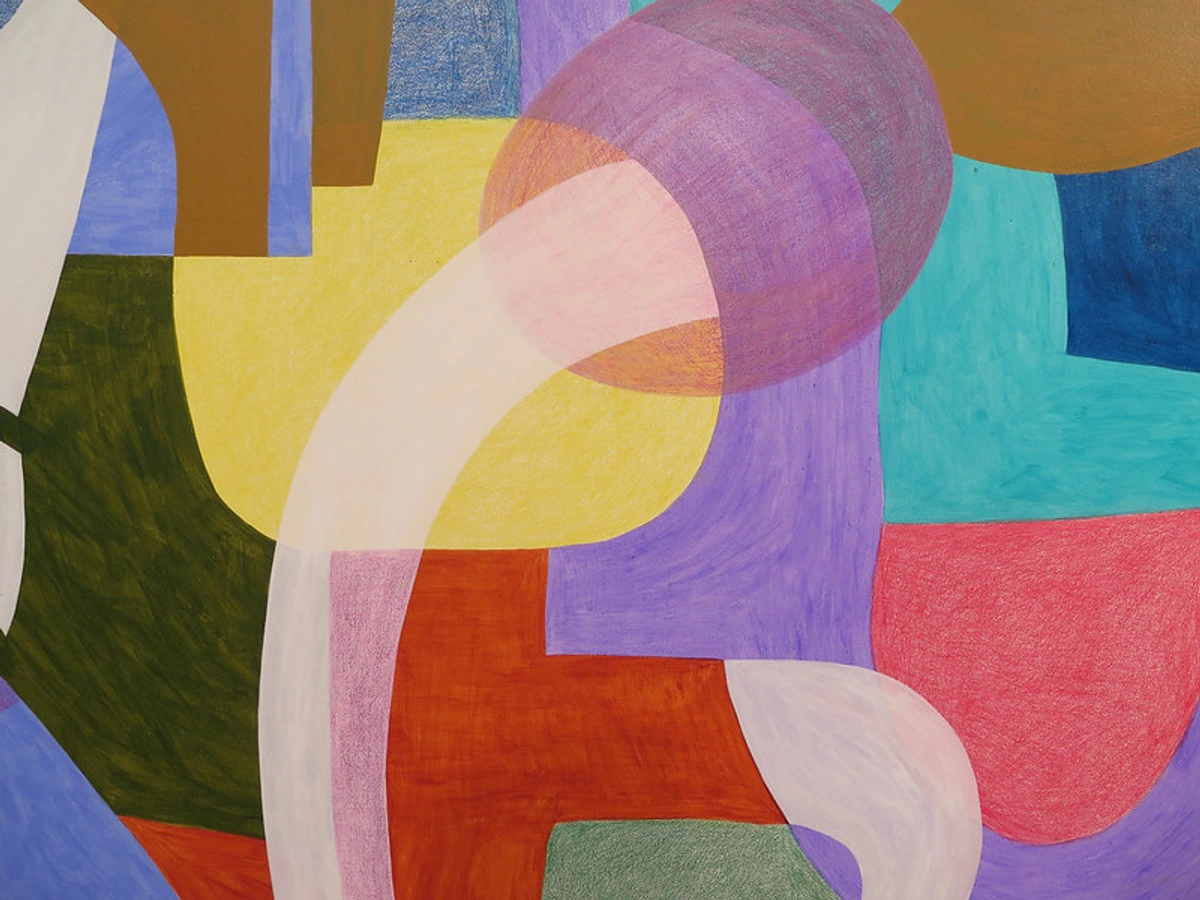
- Wassily Kandinsky, a pioneer of abstract art, frequently incorporated circles into his later works. For Kandinsky, the circle was the "most humble form" yet also the "most powerful," symbolizing cosmic unity and the spiritual realm. In works like his later "Composition VIII" and even a quieter piece like "Brown Silence," one can observe how circles interact with other forms to create dynamic tension and spiritual resonance – it’s almost like he’s orchestrating a silent, visual symphony. He understood the profound whisper of the round, a gentle hum that often finds its way into my own process when I seek a moment of quietude on the canvas.
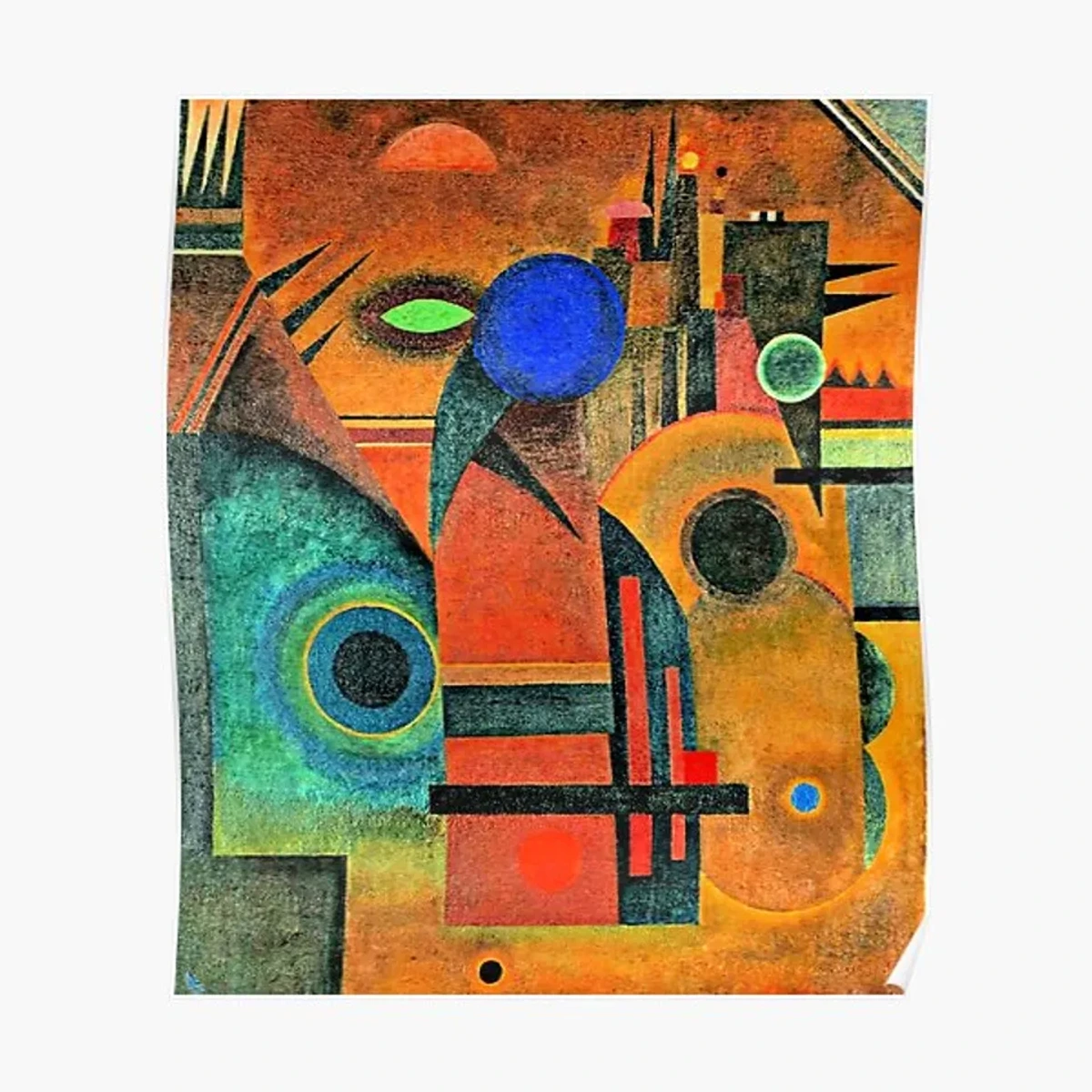
Do circles pull you in, or make you feel endlessly adrift? Sometimes, I think they offer a space for both.
The Triangle: Dynamic Thrust and Spiritual Ascent
Now, for something completely different! The triangle, with its sharp angles and inherent directionality, is a symbol of dynamism, tension, and often spiritual aspiration or even conflict. Think of a mountain peak, or a pointed arrow – it's all about direction, pure, unadulterated energy. Pointing upwards, it can represent ascent, stability (like a pyramid, firm and grounded), or ambition, a yearning for the higher realms; pointing downwards, it might suggest descent, instability, or even vulnerability, like a falling sensation. I often feel a sense of immediate energy, a push or pull, a kind of visual drama, when I see a dominant triangle in a composition. It never just sits there, does it? It’s far too impatient for that. For me, triangles are often the agitators, the sparks that ignite a composition, pulling it out of complacency.
- Psychological Impact:
- Energy, direction, and a strong sense of movement or even imbalance. It refuses to be static, demanding action, evoking sensations of progress, confrontation, or dynamic tension.
- It can evoke feelings of progress, confrontation, or even a precarious but exciting balance – like walking a tightrope.
- Culturally, its three points often relate to concepts of trinity, body-mind-spirit, or past-present-future, giving it a profound, almost mystical weight.
- Artistic Use:
- Kandinsky, ever the master of spiritual expression, also frequently used triangles to introduce dynamism and spiritual fervor into his compositions. You can really see this in works like "Composition VIII" where a sharp triangle actively pushes and pulls against the calm of the circles, creating a powerful visual tension. This interplay of forms, this deliberate push-and-pull, is what creates a powerful the unseen structure: how composition guides my abstract art, even without recognizable figures.
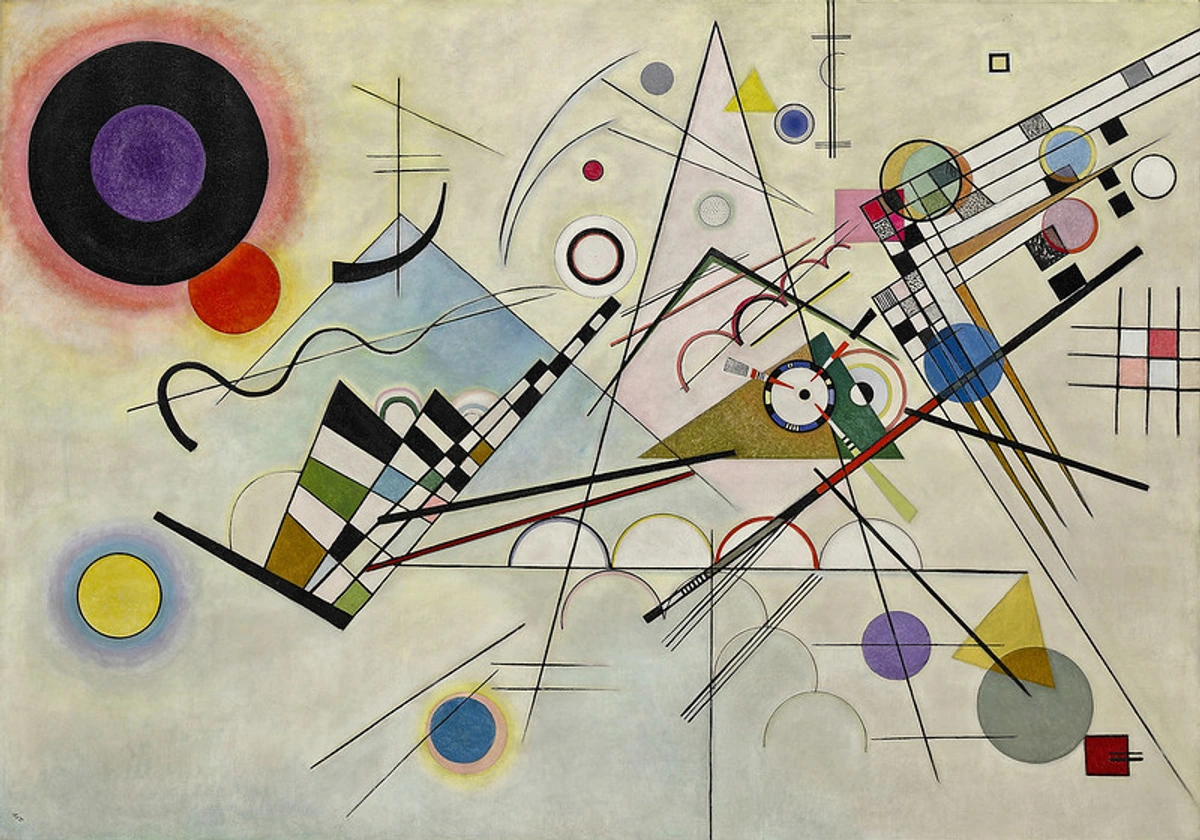
What direction does a triangle point you in, mentally or emotionally? Does it lead you forward, or perhaps make you question the ground beneath your feet? This dynamic energy is precisely why they are so vital when forms converge.
The Grand Dialogue: When Forms Converge
It’s rare to find an abstract work that uses only one geometric shape, isn't it? If it did, it might feel a little... lonely, a bit like a monologue. The true magic, the true power, the aha! moment, lies in their interplay. This is where the silent conversations happen on the canvas, the intricate dance of visual elements. It’s here that the "ancient memory" of these forms truly comes alive, as our minds instinctively seek patterns and relationships.
Consider a serene circle nestled within a rigid square, for instance. This combination can evoke a sense of the boundless spirit contained within earthly order, creating a powerful harmony, or perhaps a subtle tension between freedom and constraint – the soul within the body, or chaos tamed by structure. Or think of a dynamic triangle cutting across calm horizontal lines – it immediately injects energy, a challenge to the peace, suggesting movement, conflict, or a sudden, decisive shift. It's the visual equivalent of a dramatic interruption, isn't it?
This interplay generates tension, balance, movement, and a rich tapestry of associations that go beyond the individual forms. It's where the individual personalities of the shapes combine to tell a story, evoke a mood, or even ask a profound question without uttering a single word. For me, as an artist in my studio, this thoughtful arrangement of shapes is central to the unseen structure: how composition guides my abstract art, creating depth and narrative even without recognizable figures. The absence of literal subjects forces us to confront the emotional and intellectual impact of these fundamental forms themselves, often in combination with the emotional language of color in abstract art, which, as you can imagine, adds another whole layer of delightful complexity and personal meaning. It's about how different elements, like diverse personalities, interact to create a richer whole, forming relationships that resonate deeply within us.
Geometry's Evolution: From Spiritual to Contemporary & Beyond
While early abstract artists sought grand, universal principles and often spiritual or utopian ideals, the journey of geometric abstraction didn't end there. The inherent "ancient memory" of these shapes, that Jungian resonance I mentioned earlier, ensures their enduring power, allowing them to adapt to new contexts. Contemporary abstract artists might use geometric shapes with more personal or nuanced intentions, perhaps evoking urban landscapes, digital interfaces, or simply exploring the pure aesthetic qualities of form and color in new, experimental ways. Think of the mesmerizing optical illusions in Op Art, which used geometric patterns to create a sense of movement and vibration, playing directly with our visual perception.
The exploration of pure form also led directly to Minimalism, a movement that further distilled geometric shapes to their absolute essence. Artists like Donald Judd and Agnes Martin explored repetitive, geometric structures, inviting contemplation on structure, space, and the object-ness of the art itself, often with a profound, almost meditative quality. This systematic reduction showed how even the simplest geometric forms, devoid of overt symbolism, could command attention and evoke deep reflection.
And it’s not just in art movements. The mathematical underpinnings of geometry, like the Golden Ratio or the Fibonacci sequence, have also intuitively or consciously guided artists in their compositions, creating a sense of innate harmony and balance that resonates deeply with our perception. It's as if these principles are hardwired into our understanding of beauty, bridging art and science in a beautiful dance.
Even in modern digital art, graphic design, and branding, these fundamental shapes form the backbone of clean, intuitive, and impactful visuals, influencing everything from logos to web layouts. The enduring versatility of these forms is remarkable; they are the building blocks of both complex artistic statements and everyday visual communication. The beauty is that the inherent symbolism remains, a kind of "ancient memory" built into our perception, offering viewers multiple layers of interpretation, whether the artist consciously intended it or not. It's like these shapes have a built-in language that transcends any single artist's intention, resonating deeply within us.
My own studio in 's-Hertogenbosch, for instance, often sees explorations of how these fundamental shapes can connect to a contemporary experience. I remember one crisp morning, sketching new compositions, and being struck by how the sharp angles of a newly built skyscraper outside my window suddenly found a place next to the flowing curves I was developing. It’s this dialogue between the ancient, universal forms and the utterly modern world that deeply influences how I approach how to abstract art in new ways, often blending the personal with the universal. If you're looking to bring such depth into your own space, you might find something that speaks to you in my art for sale.
Beyond the canvas, geometric abstraction's influence is everywhere, subtly shaping our daily lives. From the clean lines of modern architecture and furniture design to the intuitive interfaces of digital devices, the harmonious forms pioneered by movements like De Stijl and Bauhaus have profoundly shaped our modern visual landscape. It’s proof that these 'simple' shapes possess a power that reaches far beyond the gallery wall and into the very fabric of our lived experience.
Frequently Asked Questions: Peeking Behind the Canvas
Q: Do all abstract artists consciously embed symbolism into geometric shapes?
A: Not necessarily, and that's the beauty of it! While many pioneers of geometric abstraction – like Mondrian striving for universal harmony or Kandinsky expressing spiritual realms – were highly intentional about symbolism, contemporary artists may sometimes use shapes purely for their aesthetic qualities, composition, or as a starting point for intuitive expression. However, the inherent psychological impact and "ancient memory" of these shapes often remain, whether consciously intended by the artist or not. I've certainly had moments where a viewer points out a symbolic meaning in one of my pieces that I hadn't consciously placed there, and I always find it fascinating! It's a testament to the universal language of form, speaking to something deeper within us all.
Q: How can I "read" the symbolism of geometric shapes in an abstract painting?
A: Think of it less as "reading" and more as "feeling" or "observing." Start by truly looking at the dominant shapes and their relationships. Are circles prevalent, suggesting unity, fluidity, or perhaps a sense of boundless possibility? Do squares create a sense of order, stability, or maybe even containment and rigidity? Are triangles causing tension, driving the eye, or creating a sense of ascent or dynamism? Don't forget to consider their scale (large shapes command, small ones invite intimacy) and placement (central vs. peripheral), which dramatically affect their impact. Also, critically, consider the colors used in conjunction with the shapes, as how artists use color greatly influences perception and emotion. Most importantly, allow yourself to feel and respond without pressure. There's no single "right" interpretation; it's about your personal engagement with the artwork. For more guidance, explore decoding abstraction: a beginner's guide to understanding non-representational art.
Q: What role does color play with geometric shapes in abstract art?
A: Color and geometric shapes are deeply intertwined in abstract art! Color can dramatically alter the emotional and symbolic impact of a shape. For example, a red triangle might feel aggressive and energetic, while a blue one could evoke calm direction. Warm colors (reds, yellows, oranges) tend to advance and feel more dynamic, while cool colors (blues, greens, purples) recede and often feel more serene. The interplay of high-contrast colors can heighten tension, while harmonious palettes create a sense of unity. Artists meticulously choose colors to amplify or subtly shift the inherent meaning of the forms, creating a richer, multi-layered experience. It's a whole other language layered on top of the silent whispers of geometry, explored beautifully in the emotional language of color in abstract art.
Q: Is geometric abstraction a form of minimalism?
A: While there can be significant overlap, especially with artists like Malevich or some of Mondrian's later works, geometric abstraction isn't always minimalism. Minimalism often focuses on extreme reduction and a deliberate lack of expressive content, seeking to remove personal narrative and focus on the object-ness of the art itself. Geometric abstraction, particularly in its early forms, was often imbued with deep spiritual, philosophical, or utopian ideals – a very expressive kind of reduction. Richter's "1024 Colors" is a great example of where the two might meet, presenting a minimalist grid that still vibrates with potential meaning and conceptual depth. You can learn more in our ultimate guide to minimalism.
Q: Can geometric art feel cold or impersonal?
A: This is a common perception, but I'd argue it's often far from the truth! While geometric art uses precise, often rational forms, its power lies in how these forms interact, the emotions they evoke, and the universal symbolism they tap into. A carefully placed square can feel grounding, a circle encompassing, and a triangle dynamic. The choice of colors, the composition, and the artist's intention all imbue these 'cold' forms with profound emotional resonance. Just as architecture can feel deeply personal and evocative despite its geometric structures, so too can abstract geometric art, speaking directly to our subconscious without the need for literal representation. It’s less about a direct depiction of emotion and more about stimulating it through pure, intentional form.
Q: Can geometric art evoke strong emotions?
A: Absolutely! Despite their seemingly 'cold' or 'rational' nature, geometric shapes can be incredibly expressive and powerful emotional triggers. Think of the dynamism of sharp diagonals creating a feeling of unease or exhilaration, the grounding force of a large, stable square bringing calm, or the encompassing peace of multiple, interwoven circles evoking harmony. When combined with color, scale, and composition, they can create powerful emotional landscapes. Consider a piece with many tightly packed, angular triangles in clashing colors; it might evoke anxiety or frenetic energy. Conversely, a large, open canvas with a single, softly colored oval could feel meditative and serene. It's less about depicting an emotion directly and more about stimulating it through pure, intentional form. This inherent power of forms to connect directly with our psyche is what makes abstract art so compelling.
Q: How can understanding geometric symbolism enhance my appreciation or choices when buying abstract art?
A: Knowing the inherent symbolism of shapes can profoundly deepen your connection to abstract art. When you understand that a circle might represent unity or eternity, or a square stability and order, you can consciously look for pieces that resonate with specific feelings or intentions you wish to evoke in your space. Perhaps you seek a calming presence (circles, horizontals), or something to inspire dynamism (triangles, diagonals). This knowledge transforms passive viewing into an active dialogue, allowing you to select art that speaks directly to your subconscious desires and personal narrative. It helps you articulate why a certain piece moves you, making the buying experience more meaningful and personal. Ultimately, it empowers you to choose art that isn't just visually appealing, but spiritually and emotionally enriching – truly part of your journey. It's about finding art that whispers your story back to you.
Conclusion: A Continuous Revelation of Form
So, as you can see, geometric shapes in abstract art are far more than mere lines and angles. For me, they've become ancient symbols, psychological triggers, and universal languages that help me navigate those "big, messy feelings" I mentioned at the start. They transcend time and culture, offering a pathway to connect with something deeply human. By understanding their inherent symbolism, and by simply allowing ourselves to feel their unspoken stories, we unlock a richer appreciation for the intentionality and profound depth of abstract compositions. These forms invite us to look beyond the surface, to feel, and to connect with fundamental truths expressed through the purity of shape. It's a continuous revelation, really, a whisper from the universe I'm still learning to hear, and one that consistently informs my own studio practice.
If you're an aspiring artist, or just someone looking to connect more deeply with art, try this: pick a basic geometric shape – a square, a circle, a triangle – and simply spend some time with it. Sketch it, paint it, or just meditate on its form. What feelings does it evoke? What stories does it seem to tell? You might be surprised by the revelations. The journey through abstract art is always one of discovery, and the geometric journey is particularly rewarding – almost like finding a hidden message in plain sight, a secret language just for you. Perhaps you'd even be inspired to visit my own explorations of form and color at my museum in 's-Hertogenbosch, where these conversations continue in vibrant, tangible ways. Or, if you're feeling ready to bring a piece of this silent language into your own home, explore my art for sale.




